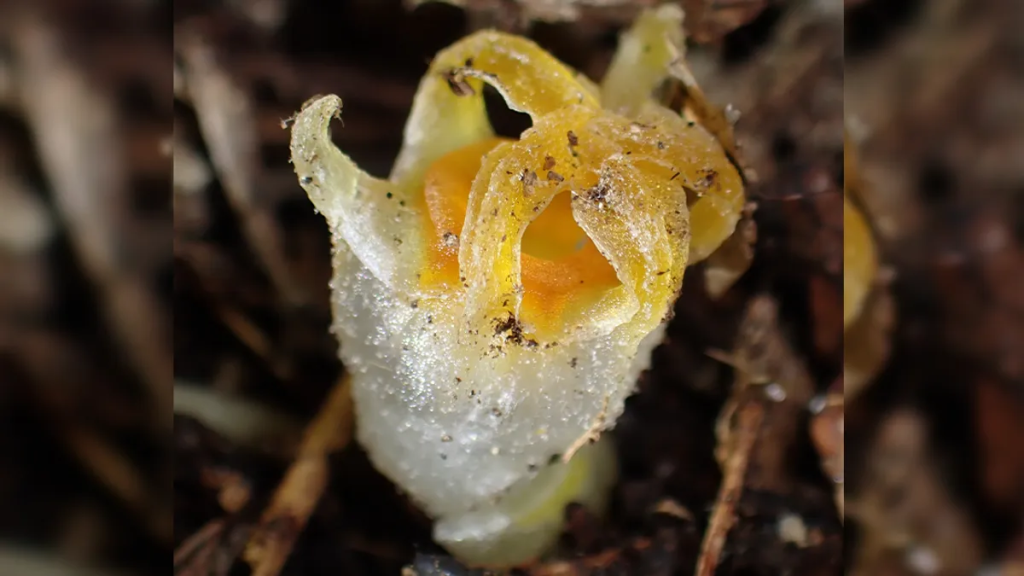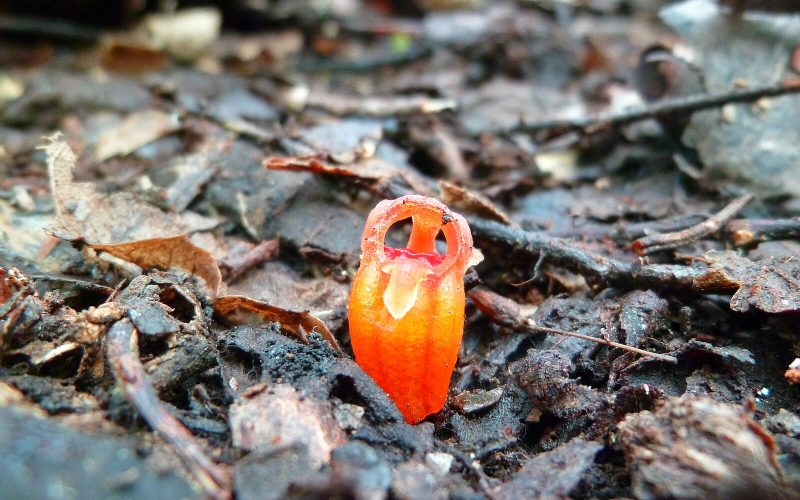A plant believed to be extinct for 30 years has been found in Japan. The “fairy lantern” is an otherworldly species of bioluminescent plant that doesn’t need the Sun to make energy. Instead, it parasitizes other underground organisms, meaning its survival is highly dependent on the health of the environment.
The rediscovered species of fairy lantern is Thismia kobensis, which was first discovered in Kobe City, Hyogo Prefecture, Japan, back in 1992. It was thought to have gone extinct after an industrial complex was built in its native range, but has now been found in Sanda City, Hyogo Prefecture, making it the northernmost Thismiaceae species known to science.
Thismiaceae fairy lanterns are characterized by their lack of photosynthesis, and are generally considered rare. Most of the plant remains underground, but their colorful flowers rise above the soil in a similar way to mushrooms. Not only are they hard to spot, barely rising above the forest floor, but it’s thought their specificity for low-quality soils and obtaining energy through fungi means they can only grow in highly localized ranges.

It was with great surprise, then, that T. kobensis was found after three decades, 30 kilometers (18.6 miles) away from its assumed range. Its rediscovery also provided the opportunity to update what we know about T. kobensis, which had previously only been described from an incomplete museum specimen.
They were able to establish that it can be distinguished from the similar species T. huangii by its short and wide ring, as well as the many short hairs on its stigma. Furthermore, as the northernmost species of fairy lantern discovered to date, it has revealed insights into the biogeography and evolutionary history of these curious plants. Not only do they look peculiar, but they light up the forest floor with their bioluminescence.
Fairy lanterns are particularly crafty when it comes to nutrient exchange. It’s thought that they evolved from plants that existed in a symbiotic relationship with mycorrhizal fungi, benefiting from the nutrient network while exchanging energy they get from sunlight.
Fairy lanterns don’t hold up their end of the bargain, however, and are parasites that feed off the network without giving anything in return. This approach to getting food is known as mycoheterotrophy, and it means that in a very roundabout way, fairy lanterns get their energy from the photosynthesizing plants that are trading with the mycorrhizal network.
The mycoheterotrophs as a whole don’t look a lot like plants. They don’t have leaves and spend most of their lives underground, only flowering for short periods of time with creations that look more like little aliens than plants.
Their cryptic nature might make them hard to find, but you’ve been rumbled, Thismia kobensis.
The study is published in the journal Phytotaxa.






